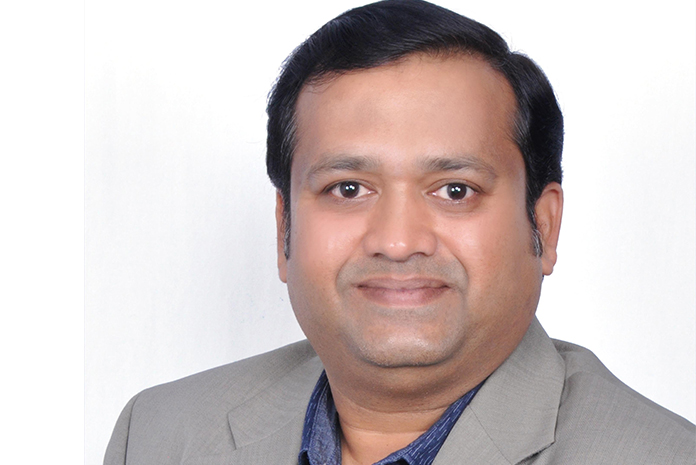Milestone Systems is a leading provider of open platform video management software, which helps to ensure safety, protect assets and increase business efficiency. In an exclusive interaction with CRN India, Ritesh Deokar, Country Manager – India, Milestone Systems shares insights into the technology trends prevailing in the video surveillance industry and how the company enables an open platform community that drives collaboration and innovation in the development and use of network video technology
How has the video surveillance space has changed over years; and how is Milestone leveraging these changes?
Video surveillance has been in the market since the 1950s and it has progressively evolved from analog cameras and recording devices to a fully digital and network-based system. With the adoption of emerging technologies such as artificial intelligence (AI), video analytics and IP-based cameras, the video surveillance space has evolved dramatically. The technologies driving surveillance devices has grown since the World Trade Center attack in 2001 and will continue to grow with national digitalisation efforts all around the world.
Today, video surveillance has become a part of our daily life, as it is being used in core city infrastructure like airports, bus terminals, retail and even public spaces. For example, city-wide searches of surveillance systems allow security officers to identify threats. It also enables remote monitoring and reducing the cost margins in hiring security guards. Milestone Systems has been contributing to the surveillance industry for more than three decades.
At Milestone, we have designed and developed a suite of technology-rich video management solutions that are customized for various industries like banking, smart cities, transport, retail and healthcare. Milestone’s IP video technology makes it possible to use video surveillance not only for security but beyond security as where technologies such as AI are being integrated in government security applications. Coupled with video capabilities, this means that law enforcers can make better decisions through AI-driven data and analysis.
AI is a trend that has been impacting almost all industries. How is AI contributing to the making of intelligent video?
AI, as a technology, is making its way into the world at a great pace. In recent times, AI has also started to gain traction within the video management industry. Developing an intelligent video system and network requires integration of advanced video technology and analytics software, which can be used for various purposes such as tracking and monitoring movements and events.
AI collects data and leverages it to make informed decisions. AI in video analytics software solutions helps in analyzing high-resolution videos faster and more accurately. Unlike traditional monitoring to ensure security, AI-based video surveillance and video analytics can perform smart search, facial recognition and translate the collected data that will help end-users make better decisions.
As people discover how AI works – through data collection, processing and analysis and how the result improves productivity and cost-effectiveness, AI may soon be a crucial asset for ensuring security in Smart Cities and the digital brain to traditional surveillance cameras.
Milestone is one of the top players in the open video management software (VMS) globally. Looking at the digital advancements and security concerns at the top of our minds, why do you think ‘open’ VMS is a relevant discussion today?
The core objective of Open VMS is to provide a tool that can configure, control and manage video surveillance equipment independent of the manufacturer. Milestone has developed video management software (VMS), XProtect, and is the first one to come up with the concept of an open platform in video surveillance. Our XProtect VMS can be used to protect a store from vandalism to managing a multi-site by high security installation.
Milestone’s video management software, XProtect, allows integrating broad selection of add-ons as well as supported hardware and third-party applications. XProtect is compatible with the widest range of network hardware devices – more than 8,000 digital cameras, encoders and digital video recorders (DVRs) from 150+ different manufacturers and offers our users freedom of choice. From the small shop in Gujarat to the large, metropolitan city of Delhi, Milestone’s open platform fits all your business needs.
Currently, India is focusing on Smart Cities mission. What is the role of video analytics and how are some of the cities leveraging analytics?
India is at the forefront of urban transformation and is committed to our government’s Smart City initiative. As more cities are faced with challenges of traffic congestion and crime due to rapid urbanization, the city municipality is turning to smart technologies to overcome these challenges. In this way, video analytics come as a hand-in-hand solution.
Video surveillance and video analytics together have a major role in providing security to a city. Integration of IoT with sensor technologies can perform a smart search and flag out any unusual behavior. The use of video analytics enables a strong law enforcement not only by ensuring security but reduces the cost burden by streamlining the workforce.
Traffic is going to be one of the major problems in India, as many people migrate to Smart Cities. Video analytics can be a significant component in getting in-depth insights of everyday traffic patterns. This data can be used by the traffic management department to read where heavy traffic is, and avoid congestion, enabling free flow of traffic within the city.
Going forward, what’s your technology and business roadmap for 2020 and beyond?
India is a significant market for us with emerging newer opportunities across all segments, ranging from retail, and transport to government initiatives like development of Smart Cities. Currently, we have a significant market share and a huge referral base across verticals in the region. In India, we are committed to ambitious growth and are planning to increase our innovation capacity by 45 per cent. For the past three years, our key focus areas have been in Smart Cities and airports. In the coming years, we will be working closely with the local government and enterprises to reach out to a wider public ecosystem and partner community in India.














